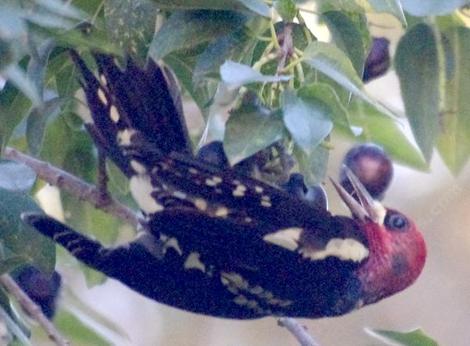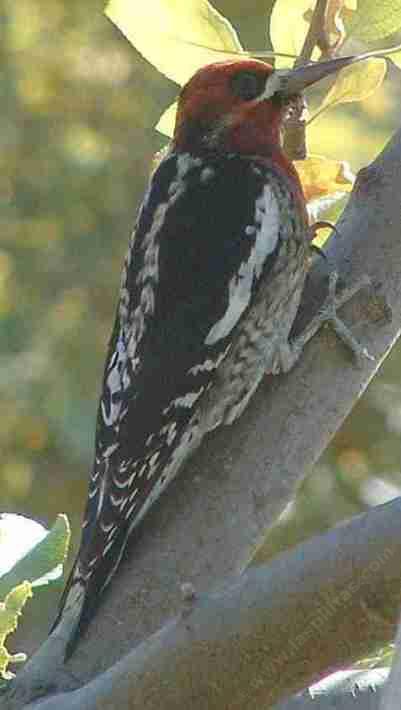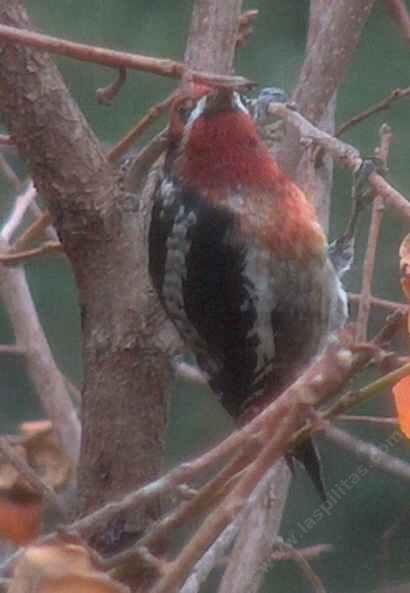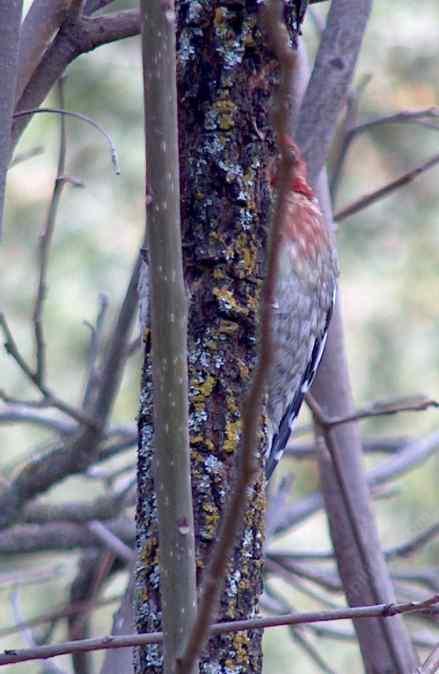Red-breasted sapsucker, Sphyrapicus ruber
Migratory status of the Red-breasted sapsucker
The Red-breasted sapsucker moves south and down hill in winter in search of better food sources and warmer climates.
How to attract the Red-breasted sapsucker to your garden
The Red -breasted sap suckers prefers to drill sap wells in riparian species such as those in the willow and birch families. They also like other deciduous trees like orchard crops The only times we have ever had serious wood pecker damage to our fruit trees (we have around 100 trees interspersed throughout the nursery) was when we forgot to paint them. When the trunk gets sunburned it begins to bleed sap. The sapsuckers comes to eat sap and insects and peck more holes eventually girdling the trees.
Range of the Red-breasted sapsucker
The Red-breasted sapsucker is a resident in northern California during the winter many birds will move south all the away into southern California. They will also move down from the higher elevations in the Sierra Nevada mountains.
Diet of the Red-breasted sapsucker
Sapsuckers peck holes into trees to produce sap wells. They eat this nutritious syrup as well as the insects that are attracted to it. The Red-breasted sapsucker also eats the cambium of the tree. Like many woodpeckers, the Red-breasted sapsucker loves ants.
Habitat/plant Community used by the Red-breasted sapsucker
The Red-breasted sapsuckers prefers to drill sap wells in riparian species such as those in the willow and birch families. They also like other deciduous trees like orchard crops. The only time we have ever had serious woodpecker damage to our fruit trees, (we have around 100 trees interspersed throughout the nursery), was when we forgot to paint them. When the trunk gets sunburned, it begins to bleed sap. The sapsuckers come to eat sap and insects and peck more holes eventually girdling the trees.
Reproduction of the Red-breasted sapsucker
The Red-breasted sapsucker prefers to nest in coniferous or riparian habitats bordering moist open areas such as meadow and streams.
The Red-breasted sapsucker will hybridize with the Red-naped sapsucker making identification difficult.
Niche filled by the Red-breasted sapsucker
The Red-breasted sapsucker uses forests bordering riparian areas.







